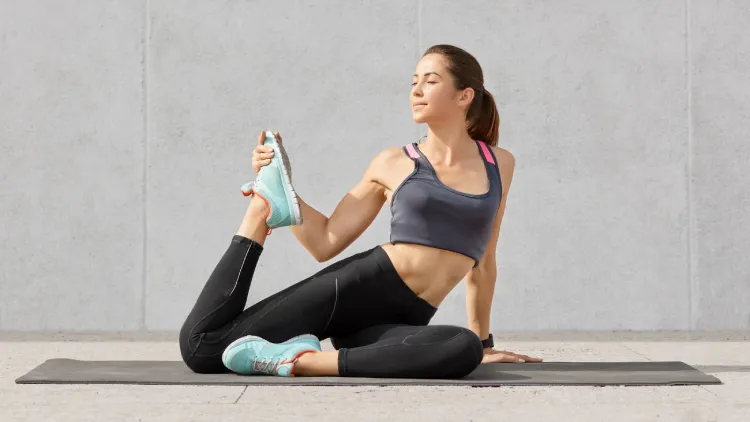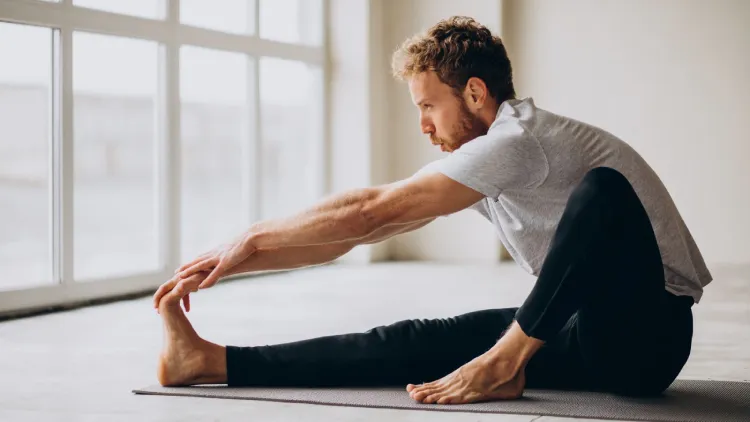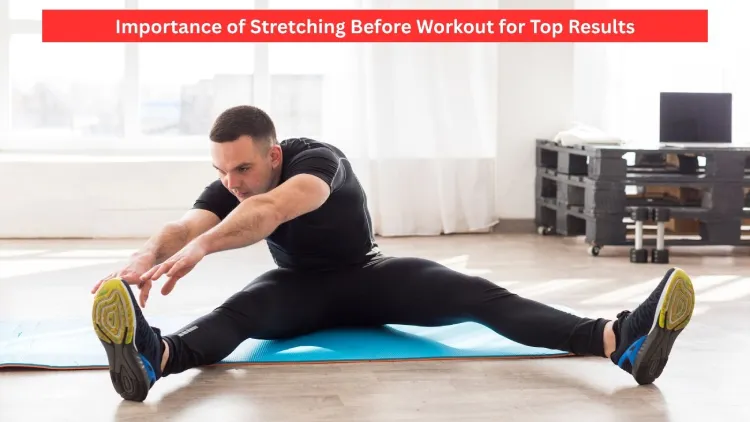Not only should you stretch as a habit, but you should also do it to prevent injuries and help your workout succeed. The importance of stretching before workout lies in how it prepares your muscles and joints for physical activity, reducing the risk of strains and sprains while improving overall performance. Visiting a healthcare professional or sports doctor is a smart idea so that your new routine is both safe and effective.
Do I have to stretch before exercising?
Stretching helps the body in various important ways, and these are some of them.
Stretching first can lower your risk of getting hurt during your workout. Proper stretching of your muscles and joints will prevent exercise injuries such as strains, sprains.
Stretching often improves flexibility, smoothly moves your joints into all positions and reduces the stress on your muscles during workouts. For this reason, you won’t get hurt as much, your skills will rise, practising will be easier, and your recovery will be better. The importance of stretching before workout also includes getting your mind focused: it uses up all that idle noodling time so that your blood (and mind) is ready for the task at hand.

Benefits of stretching before exercise
Improving your workout is helped by the physical changes that stretching causes in your body.
- Enhanced use of oxygen: Doing regular stretches can increase how much oxygen your body uses, most notably while you lift weights. When your muscles get more blood, your body is ready to handle more oxygen and your VO2 max increases, which shows cardiovascular improvement.
- When you stretch, you are helping your muscles prepare for strengthening and generating more lactic acid, which speeds things up. It reduces both tiredness and the discomfort in your muscles, making your training less rough and last longer.
- Dynamic stretches cause your muscles to become active by sending neural signals to them. Because of this, our muscles become both stronger and more efficient, helping with both intense and resistance exercises.

Types of Stretching Techniques
Different types of stretching are beneficial, and if you know how long to hold them, you can improve your workout greatly.
- Dynamic: Dynamic stretching has you repeat controlled movements that are like the actions you’ll take during the sport. An example of dynamic stretching is hitting some “walking lunges” before you do your run, bike or work out with weights. Just spending five to 10 minutes on dynamic stretches before working out can improve how well and comfortably you exercise.
- PNF: Unlike a regular stretch, PNF stretching has you use contraction and relaxation of certain muscles to help you stretch. Partnering up is the norm, and the exercise improves your flexibility fast. For PNF stretching of the hamstrings, you usually begin by lying on your back with one leg elevated. When you pull your leg up by contracting your hamstrings, your partner gently pushes the other way. A traditional PNF stretch lasts 3 to 5 seconds of muscle contraction and then 10 to 20 seconds of expanding the muscle, done 2 to 4 times. It is the leg stretch before a workout.
- Static: The seated hamstring stretch is a good example: one leg forward, the other leg bent and foot resting on the inside of the knee, leaning slightly forwards, without bending the back. This is a wonderful way to begin to build up flexibility and end up getting your muscles ready for the stretch. You want the stretch to be held for 15–30 seconds, and these can be repeated 2–4 times. You can visit our article on back stretching before a workout if you want to know more about it.
- Passive: With this stretch, you stay in the same position for a set period. A stretching partner or prop, or support can place external pressure on your body to deepen a stretch, allowing your body to relax. Or you can use the floor or against a wall. Common passive stretches involve the hamstrings by stretching them with your legs straight, touching your toes. The best time to perform passive stretches is also to stretch to maximise flexibility and release stress, to do this, you should hold passive stretch for 15—and up to 30—seconds and repeat it 2—4 times.
Read More: Make the Most of the Sleeper Stretch
Importance of Stretching Before Workout
Sports medicine experts say your stretching regimen should be the same as with any workout regimen. Dynamic stretches (the things you perform), which get your muscles ready for the challenge they are about to face, are useful when you’re weight training and would like to include some similar stretches to the exercise you will be doing.
If you’re doing cardio, then you want to go for stretches that ease you into an elevated heart rate and warm up your body so that your cardiovascular system is up next to the task. For yoga and other mind-body workouts, choose stretches that help you stay flexible and pay attention.
Stretching After Exercise
Just as much as stretching before your workout, you have to stretch after your workout. Stretch after your workout should be the same intensity as your workout. If you just did high-intensity workouts, make sure to focus on lengthening the major muscle groups put to use with the slow static stretch to reduce your heart rate slowly. Following weight training, concentrate on static stretches that target specific muscles you note outworked to remove lactic acid and aid in recovery.
When you’ve completed your weight training, stretch the lower body to revive your need for suppleness and reduce muscle tension. The orthopaedic specialists with EmergeOrtho—Blue Ridge Area specialise in every aspect of the body. Whether you have suffered a sports injury or you train for a particular sport, our board-certified sports physicians and surgeons can lead you to a safe recovery and get you in tip-top shape to play as soon as possible.

Conclusion
It’s not just about getting your muscles ready for exercise; stretching keeps your body safe, helps you improve and helps you heal faster. Stretching both before and after you exercise helps your muscles work well, protects you against injury and improves your ability to move easily and freely. It’s important to stick with your warm-up and cool-down stretches, whatever type they are. Begin any new fitness program only after consulting a professional to check that your stretching is suitable for you. All in all, stretching helps you build a stronger, healthier and more flexible body.
Frequently Asked Questions
Do I have to stretch every single time before starting a workout?
It is necessary to stretch before engaging in exercise. Before physical activity, it stretches your muscles and joints, improves blood flow and decreases your chance of injury. Warming up the body is best accomplished with a set of dynamic stretches.
How are static and dynamic stretching unique from each other?
In static stretching, you hold a stretch for 15–30 seconds, which you usually perform after exercising to help you relax and become more flexible. Dynamic stretching is a process where you move like you will during your workout and should be done just before starting a session.
Can stretching make me perform better?
Absolutely. Stretching improves your flexibility, helps deliver oxygen to muscles and helps stop you from getting tired. It helps you move more freely and get your body ready for tougher movements, so you perform and last better.
When should I stop stretching after my workout is over?
How hard you worked out affects how long and intensely you should stretch. Take a few minutes to stretch your biggest exercise muscles, keeping each position for around 30 seconds and repeating it two to four times to minimise soreness and help recovery.







